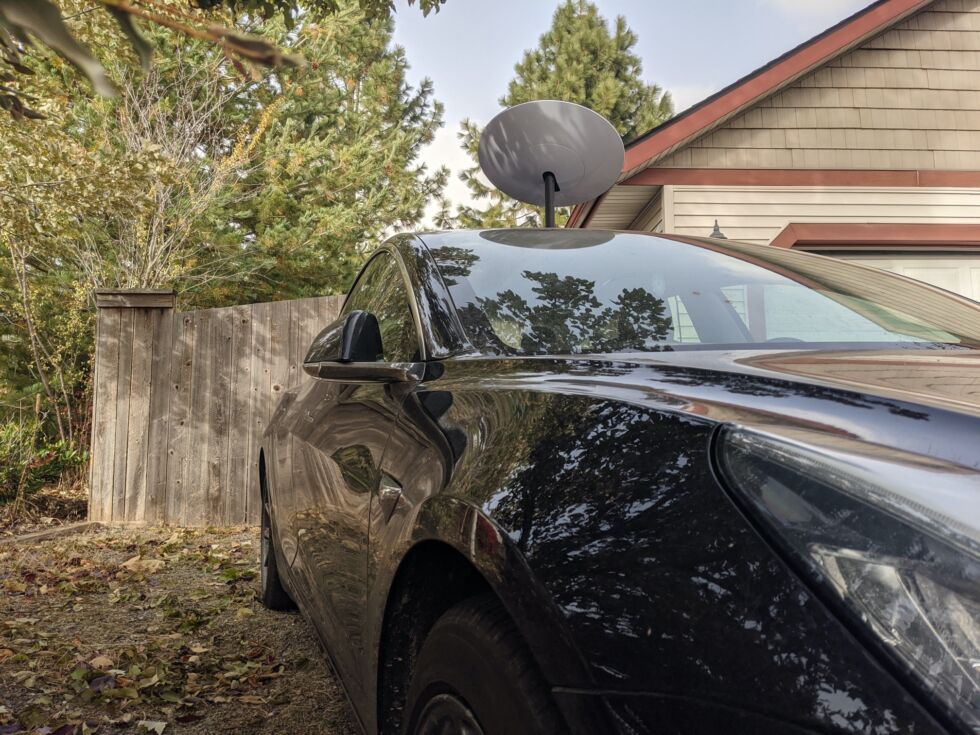
SpaceX, under the leadership of Elon Musk, continues to develop Starlink satellite Internet. It looks like the company's goal - to cover the entire planet with communication - is close to being achieved. In any case, everything is heading towards this. But, besides coverage, there are other interesting tasks that Elon Musk recently spoke about.
So, the other day he announced that already this year, users of Starlink satellite terminals will be able to use them wherever they want, and not just in their home. You can, for example, put a plate on a trailer and travel to different countries. If the region has coverage, the user will have the Internet. When and how is it planned to be implemented?
What Musk Told
The businessman said on Twitter that satellite Internet, or rather, equipment for him, will become fully mobile this year. True, in order to achieve good coverage, several more communication satellites will need to be launched into orbit. Plus, introduce a couple of key system updates.
Besides Twitter, there are other sources of information. So, SpaceX had to disclose part of the plans for the development of satellite Internet in its application to the US Federal Communications Commission. The application requests the possibility of deploying updated satellite terminals so that satellite Internet can be connected in a car, on a ship, and in an airplane / helicopter. In general, the Internet is everywhere and everywhere.
If the FCC approves the company's application, then Starlink will soon become fully mobile.
It is worth recalling that Dishy McFlatface, equipment for connecting to satellite Internet, is now supplied in its fixed version. But this is only a beta version of the connection program. Most likely, after the launch of the main project, the equipment will be truly autonomous. But for this, of course, several more tests will have to be carried out.
Now in the terms of the contract with the company there is a clause that the terminal is intended "for use at the address indicated in the application." However, some daredevils among the users carried antennas and received the Internet outside the home .
Over time, the quality of service gets better, including uptime, bandwidth and latency. Users are talking about this, Musk himself says.
As mentioned above, the main goal of the entire project to create a global satellite network is to provide communications for the entire planet. And the company is actively moving along the intended path.
The beta service provides bandwidth from 50 to 150 Mbps, with latency ranging from 20 to 40 ms. The more satellites in orbit, the better the performance. By the end of the year, Musk promises already 300 Mbps and coverage of most of the planet.
There are 1,351 communications satellites in low orbit . A total of 1,445 such systems were launched. However, some are in reserve, some have been de-orbited and burned up in the atmosphere - they were destroyed after a refusal to work, some are simply being tested. But what is there is quite enough for a good quality of communication.
A total of 12,000 satellites are planned to be launched, with a further increase in this group (if allowed by the FCC) to 30,000.
Unfortunately, the system is currently only available in the United States and only in some regions. Later, the geography of the service will be expanded, but the number of orders will still be limited. The company can be understood: now only beta testing is being carried out and so far there is no need for extra users.
The cost of the terminal is still $ 499, and the price of communication services is $ 99 per month. The company has already said that pricing will remain transparent to users, and prices will remain affordable after the beta test ends. SpaceX now has permission from the regulator to deploy 1 million user terminals in the United States. In a new application, the FCC is asked to authorize already 5 million terminals.

To accelerate the development of the Starlink satellite network, the company is building a new plant in Austin. The plant will produce systems for the manufacture of satellite dishes, Wi-Fi routers, installation and other equipment.
The new production will help keep up with the demand for global Internet service. The construction of the factory is expected to accelerate the rollout of Starlink's broadband satellite network.
The construction of the new plant became known not from the news, but from the announcement of a vacancy for the position of an automation and control engineer. The announcement states that the engineer will play a key role. The plant's goal is to "produce millions of consumer-oriented devices."
A little about the problems
Companies are thwarted by competitors who are struggling to maintain the monopoly of land-based communications. Their main argument against the Starlink project is that the company's technologies have not yet been fully tested, and the network does not work everywhere.
In a statement, competitors said: “The satellite network is still in beta testing, so communication is not available everywhere, but questions remain. At the same time, the satellite network has not yet demonstrated the combination of speed and latency previously promised by the company. " In addition, the group's representatives believe that providing funds to companies that are just testing their technologies is not a justifiable move on the part of the FCC. Moreover, SpaceX does not need much funding from outside.

The Wall Street Journal recently published an article about an attempt to stop Musk. Competitors have banded together, adding regulators and experts to their coalition. All of them believe that "the billionaire is building an almost monopoly business, threatening the safety of people and vehicles in space, as well as harming the environment."
Other satellite companies have complained that Musk satellites interfere with their own equipment by blocking signals.
